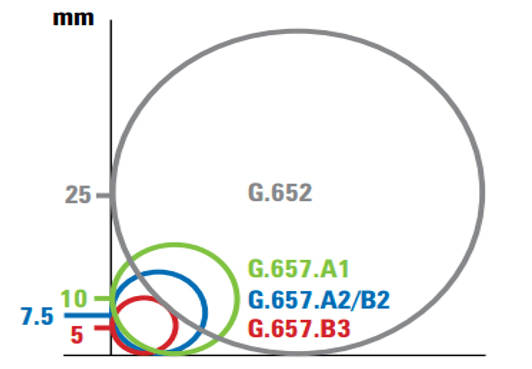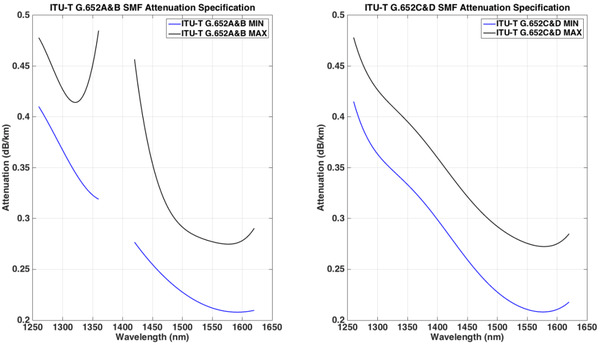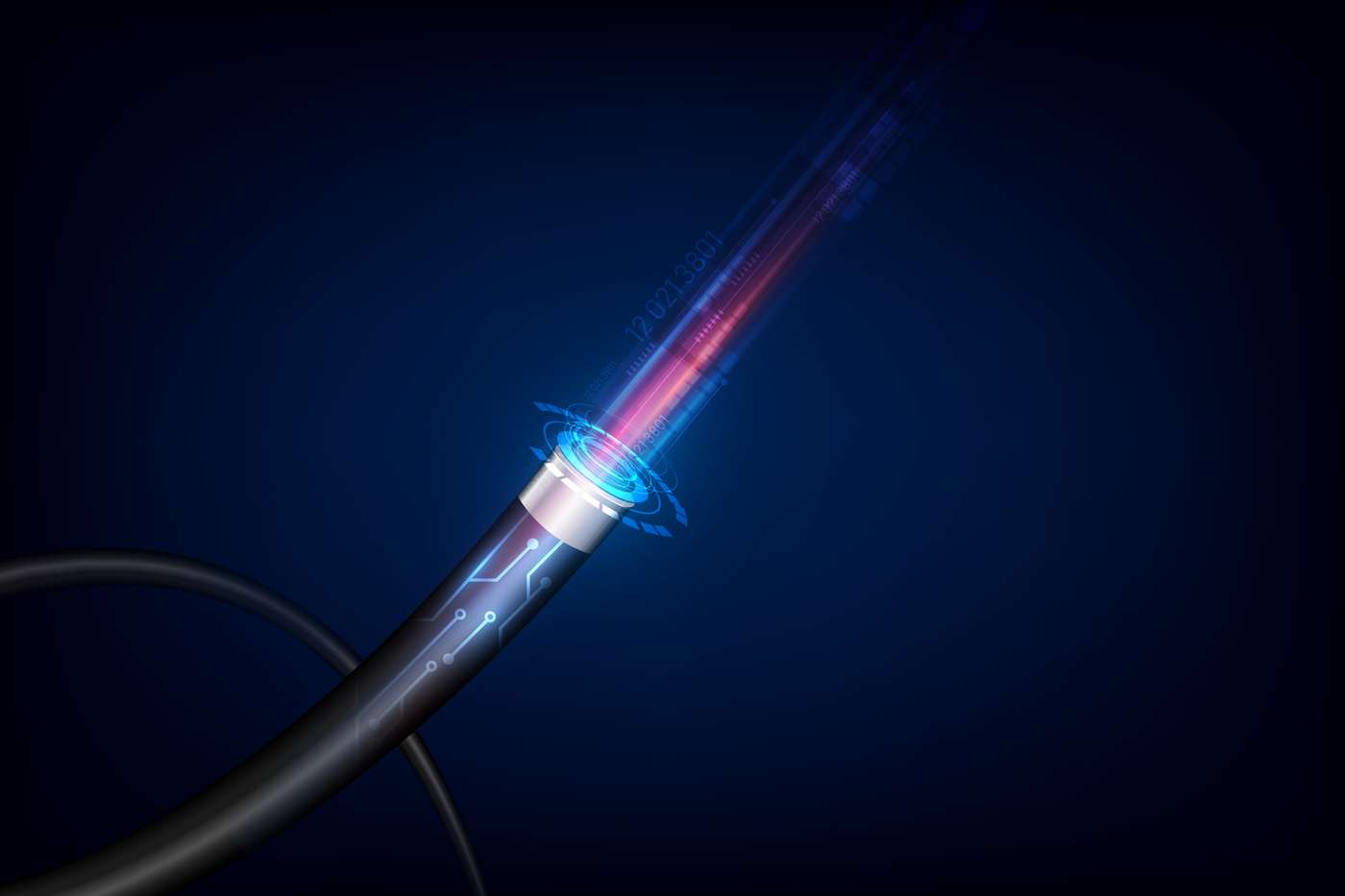ITU-T is an international organisation that sets standards for telecommunication technology. Its G65x series are standards for single-mode cables worldwide. Among them, G652 fibers are the most commonly used. And G652D fiber is the latest subcategory of the specification.
Contents
What is G652D fiber, and how does it work?
G652D optical fiber has been in use for almost 30 years in optical communication. There are two types of optical fibers: single-mode and multi-mode. These modes in optical fibers refer to the pattern of light traveling inside them. G652D is a single-mode optical fiber; only one light pattern can travel inside it. It has been a favourite because of its backward compatibility. That makes it easier to splice them with earlier G652 fibers while repairing. The G652D fiber cable has a mode field diameter of 10.1 μm. The mode field diameter is the width of an optical fiber within which the signal travels. Further, G652D is a rigid optical fiber with a limited bend resistance, as shown below. The maximum bend radius for this optical fiber is 25 mm. Therefore, you usually use G652D fibers with a G657 a2 fiber for closed spaces.

Advantages of using G652D singlemode optical fiber
Advantages of the fiber optic cable are as follows:
- Polarisation Modal Dispersion (PMD) is when two polarisations of light travel at different speeds, causing the spreading of the signal. This spreading reduces the signal strength. The G652D fiber offers a higher PMD performance compared to G652C.
- Water peaks are where the water molecules are present in the fiber. Due to these, these ions absorb the signal and reduce their strength. G652D has reduced water peak attenuation at 1383 nm.
- They support wavelengths from 1260 nm to 1625 nm, i.e., from O-band to L-band.
- They are excellent for short unamplified communication in metro networks.

The above graph shows the attenuation coefficients of G.652.
Application of G652D fibers
The advantages of optical fiber technology have offered many applications for G652D fibers.
ITU-T G652D single-mode fibers are primarily used in networking and communication. You can use the G652D fibers for both short- and long-range networking applications. For example, you can use these fibers for LAN, MAN, and access networks.
These G652D fibers have eliminated the water peak for the complete spectrum. Hence, you can use both 1310 nm and 1550 nm. Therefore, you can use these fibers for Coarse Wavelength Division Multiplexing (CWDM) transmissions.
G652D is compatible with both OS1 and OS2 constructions. So you can use these fibers for both indoors and outdoor optical cable networks.
You can also use G652D in the field of micro-optics that deal with the manufacturing and application of small optical components.
FAQs:
- What is the difference between G652 and G657?
- What is low water peak fiber?
- Why are ITU G652 conventional type fibers not used for 1550 nm?
- What is the difference between OS1 and OS2 fiber?
Both G652 and G657 fibers are popular choices for fiber-optic networks. However, G652 provides low attenuation for longer ranges (over 100 km). In addition, it is bend-sensitive: its bend radius can not be less than 25 mm for optimum performance. In contrast, G657 single-mode fiber optic cables are bend-intensitive. Their bend radius ranges 5-10 mm, depending on the subcategory. This low bend radius makes it ideal for short-range and high dense installation with reduced cost. G652 is suitable for LANs and MANs, while G657 fibers are best for Fiber-to-the-home (FTTH) networks.
During manufacturing, water molecules can enter the optical fiber. The regions where these water molecules exist are called water peak areas. These areas have -OH ions and they cause attenuation by absorbing the signals. Hence, you need to minimise water peak areas to reduce attenuation due to absorption by -OH ions. A low water peak fiber has a reduced water peak area. Therefore, these fibers have a lower loss due to attenuation than that inherent in Silica. For example, fiber optic cable G652D is a low-water-peak fiber.
The conventional ITU G652 fibers are single-mode fibers excellent for 1310 nm. You can also use them in 1550 nm. However, chromatic dispersion is very high when using these fibers in the 1550 nm region. This dispersion limits how much information the fiber network cable can carry at high bit rates. And the shift to 1550 nm specifically happened to fulfill the high bandwidth needs by using high bit rates. Therefore, ITU G652 conventional types of optic fiber cables are not suitable for 1550 nm.
OS1 and OS2 fiber optic cable types primarily differ in their construction. OS1 is tight-buffered, meaning manufactured into a solid medium; an OS2 fiber is not. OS2 uses a loose-tube structure. OS1 optical fibers are best for ranges under 2000m for in-premise networks. For large transmission distances, OS1 fiber optic cables are best. You can use them for capacities up to 10 kms. OS1 fiber cables are compatible with all G652 optical fiber subcategories, but OS2 optic cables are only compliant with G652D and G652C. Finally, OS2 is an outdoor cable, and OS1 is an indoor cable.















